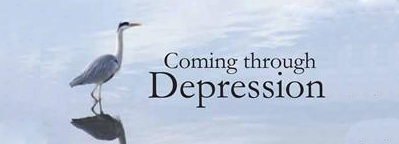Live your life more mindfully

Tony Bates’ New Year’s resolution is to live his life more mindfully. He is updating readers of his Irish Times column on his progress every week and can also be heard talking about the subject on the John Murray Show on RTÉ Radio 1, where he is giving a mindfulness workshop to some listeners.
If you’ve been following him and would like to give it a try, here’s a short exercise in mindfulness from his book, Coming through Depression: A Mindful Approach to Recovery, to get you started.
The following exercise is a simple ‘practice’ that can strengthen and deepen your capacity to be mindful.
Taking the time to stop, to rest and to be open to whatever is going on in your life can feel strange in the beginning. You may have been living your life in a different way for so long, running from one activity to the next, and trying so hard not to think about the things in your life that upset you, so it can feel a little unnerving to change. Mindfulness is not about gritting your teeth and making yourself change. It is a much more gentle activity than that. It also requires a great deal of patience, kindness and self-compassion.
• To learn how to be mindful in this way, set aside a little time each day to practice.
• Choose a place in your home, which you can make your ‘safe’ place. Give yourself time to settle into this place until you are comfortable and alert. It may help to sit in an upright position, to open your chest, and to relax your arms and shoulders. Rest your hands on your lap and close your eyes if this feels natural for you. Alternatively you can focus your gaze on a spot on the floor a few feet in front of you.
• Let your attention move through your body, from your head to your toes, and then allow it to settle on the rhythm of your breath. Find where it is easiest for you to follow your in-breath and your out-breath. It may be in the rise and fall of your belly or your chest; or it may be that you can follow it most easily by keeping your attention on the sensation of air moving in and out of your nostrils. Focus your attention wherever you find it easiest to stay with your breathing.
• Follow your in-breath as it passes into your body and follow your out-breath as it passes out of your body. With each in-breath say to yourself, ‘Breathing in, I know I am breathing in’; with each out-breath say, ‘Breathing out, I know I am breathing out. ‘After a short while, you can shorten these phrases to ‘in ‘with each in-breath and ‘out ‘with each out-breath. This basic practice of mindfulness is called ‘In–Out’.
• Breathe naturally; don’t worry about breathing deeply or breathing slowly. Whatever way you are breathing right now is just perfect. By becoming aware of the rhythm of your in-breath and your out-breath, you bring your attention back to the present moment and connect with your body.
• Become aware of the space around you. This is the place that your life has brought you to. It is your safe place. Say to yourself: ‘This is where I am now, this is where I am safe’, ‘This is where I stop running and come home to myself ’, ‘This is where I choose to be’. Repeat any or all of these phrases to yourself and allow your body to settle into this place.
• You may notice that, sooner or later, your attention drifts away from your breath, as your mind becomes distracted by some thought or feeling or sound. Don’t be surprised by this. This is what your mind does, and it’s been doing this for years. When you notice your mind wandering, just smile. And then, as best you can, gently escort your attention back to your breath. If your attention wanders away from your breath a thousand times, gently escort your attention back to your breath a thousand times.
• Your breath is a resting place that you can return to anytime, whatever is happening in you or around you. Becoming mindful of your breathing steadies your attention and anchors you in your body. Your worries and your fears will pull you constantly into the past or into the future. Your breath brings you back to your safe place in the present. When you are tired of being pulled here, there and everywhere by your mind, it’s good to find a place where you can rest.
With practice, this exercise becomes easier and very enjoyable. But in the beginning it can be difficult. Mostly people find it hard because they try to ‘make it work’, they try to ‘control’ their breathing and ‘stop’ their mind wandering. They believe they have to do it in a certain way to ‘get it right’. What they learn through practise is that they don’t have to control anything; they simply have to enjoy breathing.
Good luck and do let us know how you get on!
Coming through Depression by Tony Bates is now available from Gill Books.
We're Hiring - Gill Production Assistant
© 2025 M.H. Gill & Co. Unlimited Company